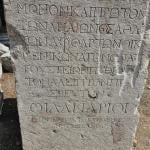The Mission of Jesus
One way to comprehend the mission of Jesus is to recognize that in addition to His coming to die and rise again, He also came to do what Adam, Abraham, and the Israelites were called to do. Namely, to be a blessing to the nations by making God known both to the nations and to the whole of creation.
Let me explain:
First, it is essential to see that the NT story is the continuation of the OT story. Now, there is typically very little objection to the claim that in the coming of Christ the OT is fulfilled.
The problem is that for many Christians the notion that the OT is fulfilled is often limited to Jesus’ fulfilling the sacrificial laws and prophecies pertaining to His death and atonement. The writers of the NT, however, seemingly want us to know that everything is being fulfilled in Jesus. The whole story was about Jesus.
Jesus and the fulfillment of the OT
The gospel of Matthew begins with a genealogy (Matt 1:1-17). Matthew informs his readers that the genealogy is intentionally divided into three equal parts of fourteen generations:
“So all the generations from Abraham to David are fourteen generations; from David to the deportation to Babylon, fourteen generations; and from the deportation to Babylon to the Messiah, fourteen generations” (Matt 1:17).
The first part of Matthew’s genealogy divides the story from Abraham to David (Matt 1:2-6a). In doing so, Matthew affirms that Jesus is the true descendant of Abraham and the rightful heir of Israel.[1]
The second part of Matthew’s genealogy separates the time from David to the deportation to Babylon (Matt 1:6b-11). From this we learn that Jesus is the true descendant of David and, thereby, the rightful King.
The third section of the genealogy extends from the deportation to Babylon to the Messiah (Matt 1:12-16). The significance here, for Matthew, is that the story of Israel and the OT, which ended with the nation in exile, is coming to its fulfillment in Jesus. The end of the exile is here in Jesus. God is restoring His people and fulfilling His promises in Jesus.
This is precisely what Luke demonstrates in his account of the story of Jesus. Luke’s opening reference to the things “accomplished among us” (Luke 1:1) and his concluding statement in the mouth of Jesus that “everything written about me in the Law of Moses and the Prophets and the Psalms must be fulfilled” (Luke 24:44) forms an inclusio; which is an author’s way of framing a work in order to set forth his purpose.
Clearly Luke views the whole story of Jesus as the fulfillment. Luke wants his readers to view the entire story of Jesus in light of the things that “have been accomplished among us” (Luke 1:1). This includes far more than Jesus’ atoning death and resurrection. After all, the Gospel of Luke has twenty four chapters and only two of them (Luke 23, 24) describe the events surrounding Jesus’ death and resurrection.[2]
The Gospel of Mark associates Jesus life, death, and resurrection in terms of the coming of the Son of God—note the inclusio of Mark 1:1 and 15:39: “The beginning of the gospel of Jesus Christ, the Son of God” (1:1); “The centurion, who was standing right in front of Him, saw the way He breathed His last, he said, ‘Truly this man was the Son of God!’” (15:39). It is important to note that the title “son of God” was used for both Adam[3] and Israel.[4] The Gospel of Mark, then, is an announcement that Jesus is the true Son of God, and that in Him the call of Israel is being fulfilled.
That the Gospel of John views the story of Jesus in terms of a larger narrative that extends beyond Jesus’ atoning death and resurrection is evident from the opening “In the beginning” (John 1:1); a clear allusion to Genesis 1:1.” This is confirmed by the fact that Jesus, after rising from the dead, appears to His disciples and then “breathes” on them (John 20:22). The word for “breathe” here is the same term used in the Greek version of Genesis 2:7, when Adam became a living being after God “breathed” on him. It is also used in Ezekiel 37:9-10, a passage that looks forward to a future restoration of God’s people.
The gospels present the coming of Jesus in a manner that far transcends His role of dying and rising for our sins. This in no way is meant to diminish the significance of Jesus’ death and resurrection.
It is through His death and resurrection that Jesus defeats death and establishes His kingdom. In fact, Jesus’ death and resurrection are not only essential to the story of redemption, they are, as we will explore more fully, essential to His mission, and, consequently, to our mission as the people of God. If, after all, Jesus establishes His kingdom through death and resurrection, then it stands to reason that the people of God further the advancement of the kingdom through their deaths and resurrection.
[1] This is why Paul can say that Jesus is the true seed of Abraham (Gal 3:16).
[2] Though we could be generous and make it two and a half chapters if we wanted to the include the end of Luke 22 and its description of Jesus’ arrest.
[3] Cf Gen 5:1-3; Luke 3:38.
[4] Cf Exod 4:22; Hos 11:1.













